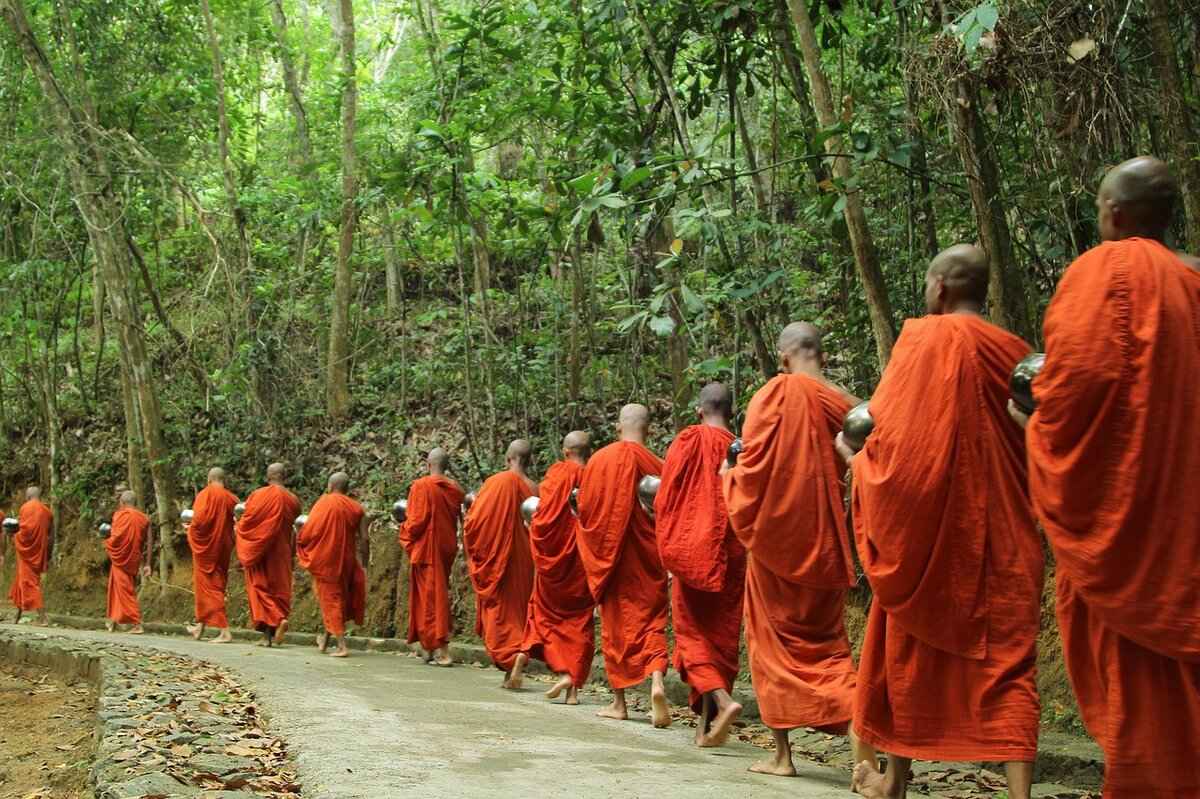This article explores the unique aspects of Kali Puja and Diwali celebrations in Bengali culture, highlighting their significance, rituals, and the distinct ways in which they are observed. Both festivals are deeply rooted in tradition and spirituality, yet they embody different themes and practices.
Understanding Kali Puja
Kali Puja is a prominent festival in Bengal, dedicated to the worship of Goddess Kali. The festival is marked by elaborate rituals that symbolize the victory of good over evil. It occurs during the new moon night in the month of Kartik, aligning with the lunar calendar.
Understanding Diwali
Diwali, often referred to as the Festival of Lights, is celebrated widely across India. It signifies the return of Lord Rama to Ayodhya after defeating the demon king Ravana. The festival emphasizes joy, prosperity, and the triumph of light over darkness.
Rituals and Practices of Kali Puja
- Preparation for Kali Puja: Devotees begin preparations weeks in advance, cleaning their homes and creating elaborate pandals.
- Key Rituals: The main rituals include chanting mantras, offering bhog (food offerings), and the immersion of the idol, each carrying profound spiritual significance.
Rituals and Practices of Diwali
- Preparation for Diwali: This involves cleaning and decorating homes with rangoli and purchasing new clothes, emphasizing renewal and joy.
- Key Rituals: Rituals include lighting diyas, bursting fireworks, and exchanging sweets, fostering a festive atmosphere.
Significance of Kali Puja in Bengali Culture
Kali Puja holds immense cultural significance in Bengal, representing resilience and strength, and reflecting the collective identity of the Bengali people.
Significance of Diwali in Indian Culture
Diwali symbolizes unity and hope, emphasizing the importance of family and community in fostering joy and prosperity.
Conclusion: Celebrating Diversity in Festivals
Both Kali Puja and Diwali represent the rich cultural tapestry of India, showcasing the diversity in traditions and beliefs while emphasizing the universal themes of good triumphing over evil.
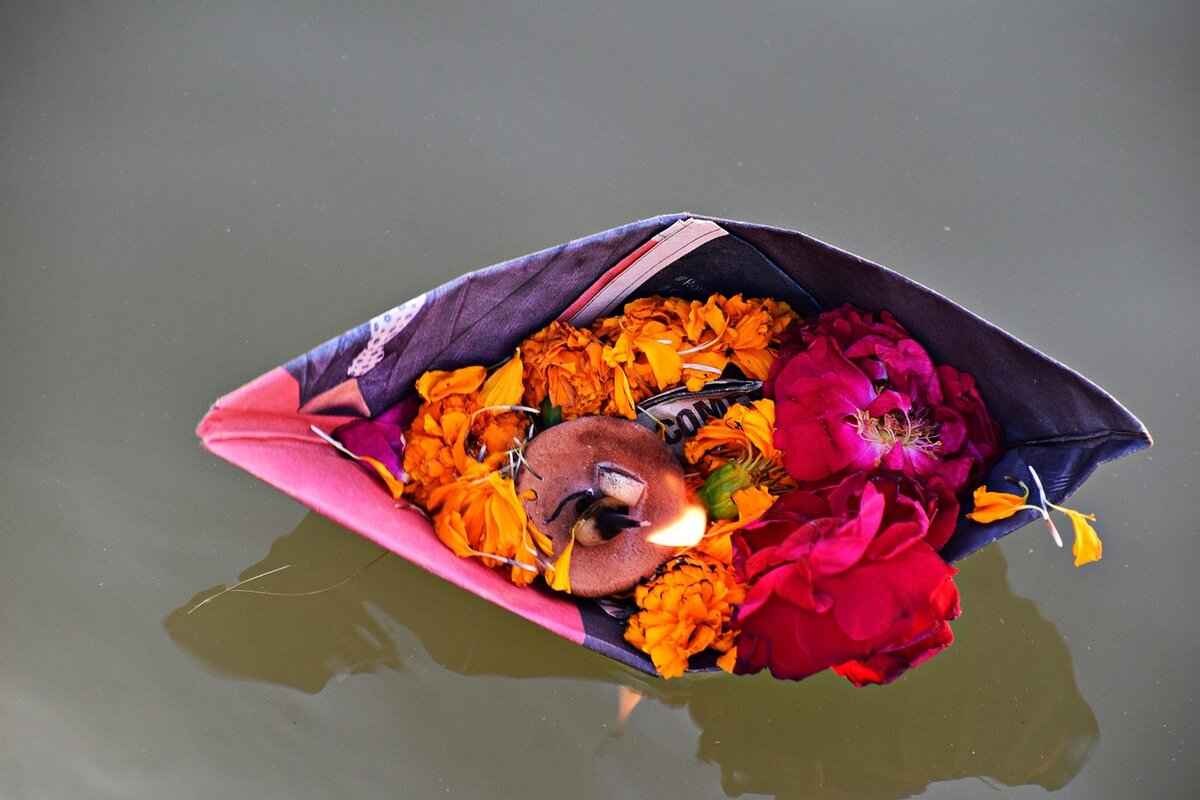
Understanding Kali Puja
Kali Puja is a deeply revered festival in Bengal, celebrated with great fervor and devotion. This festival is dedicated to the worship of Goddess Kali, who embodies the fierce and protective aspects of femininity. It is marked by elaborate rituals that not only honor the goddess but also symbolize the triumph of good over evil.
Unlike many other festivals in India, Kali Puja is primarily observed in the state of Bengal, where it holds a unique cultural significance. The festival usually coincides with the new moon night in the month of Kartik, which typically falls in October or November. The celebration marks the onset of winter and the harvest season, making it a time of renewal and gratitude.
The rituals associated with Kali Puja are intricate and filled with spiritual meaning. Devotees prepare for the festival well in advance, cleaning their homes and gathering the necessary materials for the rituals. The main rituals include:
- Chanting of Mantras: Devotees recite sacred texts and mantras to invoke the goddess’s presence.
- Offering of Bhog: Food offerings, known as bhog, are prepared and presented to the goddess as a gesture of devotion.
- Animal Sacrifice: In some traditions, animal sacrifices are performed, symbolizing the offering of one’s ego to the goddess.
- Immersion of the Idol: The festival culminates in the immersion of the idol in water, signifying the return of the goddess to her celestial abode.
Kali Puja is not just a religious observance; it is a celebration of strength, resilience, and the collective identity of the Bengali people. The festival fosters a sense of community and belonging, bringing families and friends together in shared rituals and celebrations. It serves as a reminder of the importance of overcoming darkness and negativity in our lives.
Through the vibrant celebrations and profound rituals, Kali Puja continues to inspire devotion and reverence among millions, firmly establishing its place in the rich cultural tapestry of Bengal.

Understanding Diwali
is essential to appreciate its significance in Indian culture. This festival, commonly referred to as the Festival of Lights, is celebrated with great enthusiasm across the country. Diwali represents the victory of light over darkness and good over evil, with deep-rooted traditions that resonate with millions.
Diwali commemorates the return of Lord Rama to Ayodhya after a 14-year exile, during which he defeated the demon king Ravana. This event is not only a celebration of Rama’s triumph but also a time for families to come together, share joy, and reflect on the values of righteousness and virtue.
The festival spans five days, each with its own unique significance:
- Dhanteras: The first day marks the beginning of Diwali with the worship of wealth and prosperity.
- Naraka Chaturdashi: Also known as Choti Diwali, this day is celebrated by remembering the victory of Lord Krishna over the demon Narakasura.
- Diwali: The main day of the festival when families perform Lakshmi Puja to invite wealth and prosperity into their homes.
- Govardhan Puja: This day celebrates Lord Krishna’s lifting of the Govardhan Hill to protect villagers from torrential rains.
- Bhai Dooj: The final day honors the bond between brothers and sisters, emphasizing family ties.
During Diwali, homes are adorned with diyas (oil lamps), colorful rangoli designs, and vibrant decorations. Fireworks light up the night sky, symbolizing the joy and celebration that the festival brings. Additionally, the exchange of sweets and gifts fosters a sense of community and togetherness.
Conclusion: Diwali is not just a festival; it is a celebration of life, love, and the triumph of good. It encourages individuals to reflect on their lives, spread joy, and embrace the spirit of togetherness. The rich traditions and rituals associated with Diwali highlight its importance in fostering unity and hope among people.
Historical Background of Kali Puja
Kali Puja is a festival that resonates deeply within the cultural fabric of Bengal, celebrating the fierce and powerful Goddess Kali. This ancient festival is not merely a religious observance; it represents a significant transition in the agrarian calendar, heralding the arrival of winter and the harvest season. The festival is a vibrant tapestry woven with history, mythology, and local traditions, making it a unique celebration distinct from other festivals such as Diwali.
Historically, Kali Puja is believed to have originated in the 18th century when the worship of Goddess Kali gained prominence among the Bengali populace. The festival is intricately linked to the agricultural cycles, marking a time when the fields are ripe for harvest. This connection to the land reinforces the community’s bond with nature and the divine.
The festival is celebrated on the new moon night of the month of Kartik, which usually falls in October or November. This timing aligns with the agricultural calendar, symbolizing the end of the harvest and the onset of winter. The rituals performed during Kali Puja reflect the deep respect and reverence the Bengali people hold for the Goddess, who is seen as a protector and a symbol of strength.
Mythologically, Kali Puja is associated with various legends, particularly the tale of the demon Raktabija. According to the myth, Raktabija could reproduce from every drop of his blood, making him nearly invincible. Goddess Kali, in her fierce form, vanquished him, illustrating the triumph of good over evil. This narrative is central to the festival, emphasizing the importance of overcoming darkness and chaos.
In modern times, Kali Puja has evolved, incorporating various regional customs and practices. Each locality in Bengal celebrates the festival with its unique flair, showcasing the diversity within the festival’s observance. From elaborate decorations in pandals to community feasts, the spirit of Kali Puja is alive and vibrant, reflecting the resilience and cultural identity of the Bengali people.
In conclusion, Kali Puja is more than just a festival; it is a celebration of life, culture, and spirituality. It serves as a reminder of the strength within communities and the importance of maintaining a connection to one’s roots and traditions.
Mythological Origins
The festival of Kali Puja is steeped in rich mythology that resonates deeply with the cultural fabric of Bengal. Central to this celebration is the tale of Goddess Kali, who embodies the fierce and protective aspects of the divine feminine. One of the most significant stories associated with Kali Puja is the epic battle against the demon Raktabija.
According to legend, Raktabija was a formidable foe who possessed the ability to regenerate with each drop of his blood that fell to the ground. This made him nearly invincible, as every time he was wounded, he would create a new version of himself. The gods, in their desperation, turned to Kali for help. In a fierce display of power, Kali engaged Raktabija in battle. To overcome his regenerative abilities, she devised a cunning strategy: she drank his blood before it could touch the ground, effectively preventing him from multiplying.
This dramatic confrontation symbolizes the eradication of evil forces and the triumph of good over malevolence. The slaying of Raktabija is not merely a tale of violence; it represents the cleansing of negative energies and the restoration of cosmic balance. Kali’s victory is celebrated during Kali Puja, where devotees pay homage to her strength and resilience.
Moreover, this mythological narrative highlights the importance of courage and determination in the face of overwhelming odds. Kali, as a goddess, serves as a powerful reminder that even in the darkest of times, there exists a force capable of vanquishing evil and restoring harmony.
As a result, during the festival, rituals and offerings are dedicated to Goddess Kali, reflecting the deep reverence and gratitude the people of Bengal hold for her. The celebration is not just an observance of a myth; it is a reaffirmation of faith, strength, and the perpetual struggle against darkness in all its forms.
Regional Variations
in the celebration of Kali Puja highlight the rich cultural tapestry of Bengal. Each region brings its own unique customs and traditions to this significant festival, reflecting the diversity of beliefs and practices within the Bengali community.
In Kolkata, the capital city, Kali Puja is celebrated with grandiosity. The city transforms into a vibrant spectacle, with elaborate pandals (temporary structures) showcasing intricate decorations and artistic displays. Devotees gather in large numbers to offer prayers and participate in the festivities, which often include cultural performances and community feasts.
Moving to the rural areas of Bengal, the celebration takes on a more intimate and personal form. Villagers often create smaller shrines dedicated to Goddess Kali, where families come together to perform rituals. The atmosphere is filled with traditional music and dance, reflecting the local culture and heritage. The offerings may include locally sourced fruits and sweets, emphasizing a connection to the land.
In regions like Birbhum and Murshidabad, unique rituals are observed. For instance, some communities may incorporate animal sacrifices as part of their devotion, a practice that has been a part of their traditions for generations. This aspect of worship symbolizes the devotees’ deep commitment and reverence towards the goddess.
Another fascinating variation can be seen in North Bengal, where the festival coincides with local harvest celebrations. Here, Kali Puja is not only a spiritual observance but also a time for community bonding and gratitude for the bountiful harvest. The use of indigenous materials in decorations and offerings further enriches the cultural significance of the festival.
Overall, the in Kali Puja reflect the multifaceted nature of Bengali culture. Each custom and tradition is a testament to the collective identity of the people, showcasing their devotion, creativity, and resilience.
Historical Background of Diwali
Diwali, the Festival of Lights, is one of the most celebrated festivals in India, with its origins deeply embedded in Hindu mythology. Various legends narrate the significance of this vibrant festival, making it a rich tapestry of cultural beliefs and traditions.
The roots of Diwali can be traced back to ancient India, with its celebrations symbolizing the triumph of light over darkness and good over evil. One of the most popular legends associated with Diwali is the return of Lord Rama to Ayodhya after a 14-year exile, during which he defeated the demon king Ravana. The people of Ayodhya celebrated his return by lighting diyas (oil lamps) to illuminate the path for Rama and his wife, Sita, showcasing their joy and gratitude.
Another significant aspect of Diwali is the worship of Goddess Lakshmi, the deity of wealth and prosperity. According to Hindu beliefs, Lakshmi emerged from the ocean during the churning of the milky sea, and her blessings are sought during this auspicious time. Homes are adorned with lights and rangoli designs to invite her presence, making the festival a time of renewal and hope.
Diwali is not just limited to the tales of Rama and Lakshmi; it also marks the start of the new year in many regions, particularly in Gujarat, where it is celebrated as New Year’s Day. This multifaceted nature of the festival highlights its significance across different cultures and communities in India.
As the festival approaches, preparations begin with cleaning and decorating homes, symbolizing the clearing away of negativity and welcoming positive energy. Families come together to celebrate with fireworks, sweets, and joyous gatherings, reinforcing the spirit of unity and togetherness.
In conclusion, Diwali’s historical background is rich with mythological tales and cultural significance that resonate with millions. It serves as a reminder of the enduring values of hope, prosperity, and the ultimate victory of good over evil.
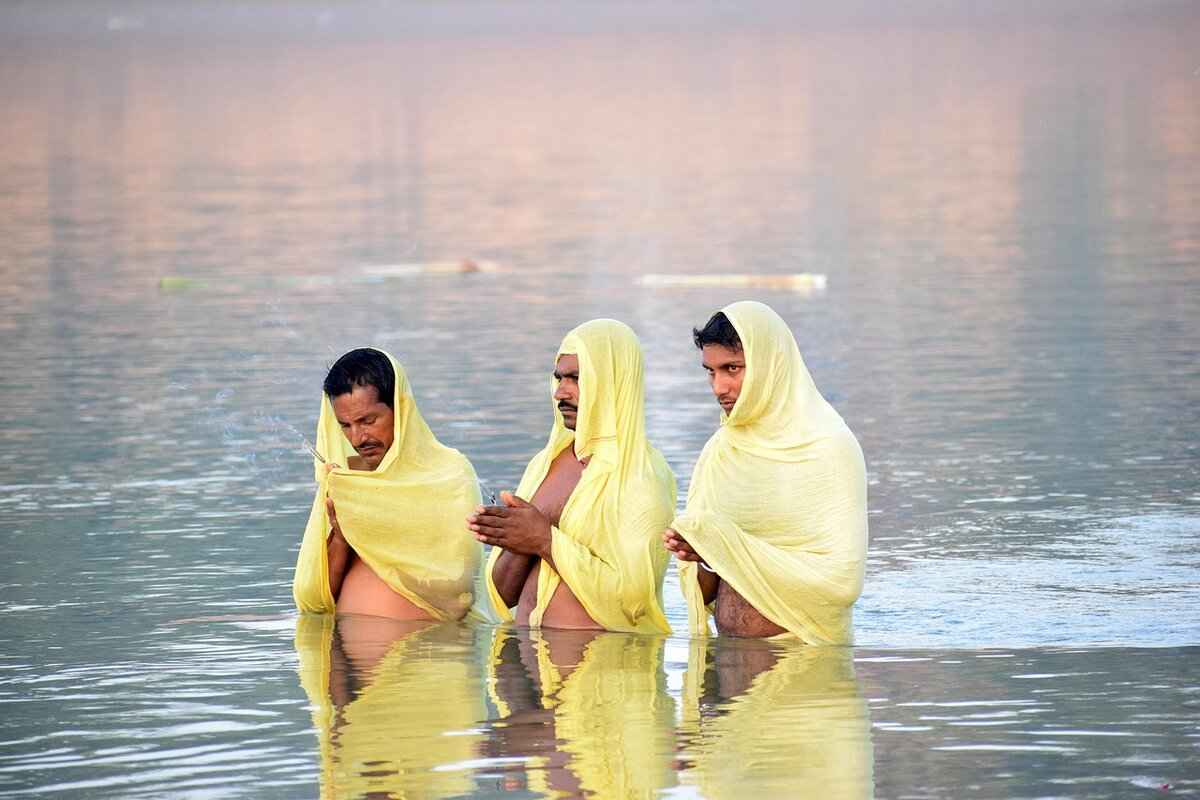
Rituals and Practices of Kali Puja
Kali Puja is a festival that embodies the essence of devotion and reverence towards Goddess Kali, celebrated predominantly in Bengal. The rituals associated with Kali Puja are not only intricate but also deeply symbolic, reflecting the spiritual fervor of the devotees. The preparations for this festival often begin weeks in advance, as families clean their homes and gather materials necessary for the rituals.
During Kali Puja, devotees perform a series of rituals that include offerings of food, flowers, and even animal sacrifices, which are significant in showcasing the intensity of devotion. The offerings, known as bhog, typically consist of traditional Bengali delicacies, fruits, and sweets, all presented with utmost respect and care. This act of offering symbolizes the surrender of one’s ego and material desires to the divine.
The main rituals during Kali Puja include:
- Chanting of Mantras: Devotees recite sacred texts and mantras, invoking the presence of Goddess Kali.
- Animal Sacrifice: In some traditions, the sacrifice of a goat or a rooster is performed, symbolizing the destruction of evil and the restoration of balance.
- Immersion of the Idol: After the festival, the idol of Goddess Kali is immersed in water, signifying the return of the goddess to her celestial abode.
The rituals are conducted with great devotion and are often accompanied by festive celebrations that include music, dance, and communal gatherings, reinforcing the cultural bonds within the community. The entire experience is not merely about the rituals; it is a profound expression of faith and the celebration of life.
In conclusion, the rituals and practices of Kali Puja are a testament to the rich spiritual heritage of Bengal. They encapsulate the themes of devotion, sacrifice, and community, making the festival a vibrant and integral part of Bengali culture.
Preparation for Kali Puja
is a vibrant and essential aspect of this revered festival, reflecting the deep devotion and cultural significance it holds in Bengali society. The preparations often commence weeks in advance, as devotees immerse themselves in a flurry of activities that set the stage for the grand celebration.
One of the first steps in the preparation involves cleaning and decorating homes. This is not merely a physical act; it symbolizes the removal of negativity and the welcoming of positive energy. Families engage in thorough cleaning, ensuring that every corner of their homes is spotless. This ritualistic cleansing is often accompanied by the application of fresh paint and the decoration of homes with vibrant colors, flowers, and lights.
Another significant aspect of the preparation is the creation of elaborate pandals. These temporary structures serve as the focal point for the celebrations and are often adorned with intricate designs and artistic displays. Local communities come together to build these pandals, showcasing their creativity and craftsmanship. The pandals become a hub of activity, drawing in crowds and fostering a sense of unity among participants.
Gathering materials for the rituals is also a crucial part of the preparation. Devotees collect offerings such as fruits, sweets, and flowers, which are essential for the puja. Additionally, many families prepare specific dishes that are offered to the goddess, symbolizing gratitude and devotion. Animal sacrifices may also be performed in some traditions, representing the surrender of one’s ego and desires.
As the festival approaches, the atmosphere becomes electric with anticipation. The community spirit shines through as people share their preparations, exchange ideas, and come together to celebrate the divine feminine energy of Goddess Kali. This collective effort not only enhances the festive spirit but also strengthens the bonds within the community, making Kali Puja a truly inclusive and joyous occasion.
Key Rituals During Kali Puja
are an essential aspect of this vibrant festival, reflecting deep spiritual meanings and cultural significance. The rituals not only honor Goddess Kali but also bring the community together in shared devotion. Below, we explore the main rituals that define this sacred occasion.
- Chanting of Mantras: The ritual begins with the chanting of mantras, which are sacred sounds and phrases believed to invoke divine blessings. These mantras create a spiritual atmosphere, allowing devotees to connect with the divine energy of Goddess Kali.
- Offering of Bhog: Devotees prepare a special meal known as bhog, which is offered to the goddess. This offering typically includes a variety of dishes, symbolizing gratitude and devotion. Once the bhog is offered, it is shared among the devotees, reinforcing the sense of community and togetherness.
- Immersion of the Idol: The final ritual, known as Visarjan, involves the immersion of the idol in water. This act symbolizes the return of the goddess to her heavenly abode, marking the end of the festivities. It is a poignant moment, reflecting the cycle of life and the belief in the eternal presence of the divine.
Each of these rituals carries profound spiritual significance, reinforcing the themes of devotion, gratitude, and the victory of good over evil. As the community comes together to participate in these rituals, they foster a sense of unity and shared cultural identity, making Kali Puja a truly remarkable celebration.

Rituals and Practices of Diwali
are deeply rooted in tradition and culture, marking the Festival of Lights as one of the most celebrated occasions in India. This festival not only signifies the triumph of light over darkness but also emphasizes joy, prosperity, and the importance of community.
During Diwali, families come together to engage in various rituals that are rich in symbolism and meaning. The most prominent practice is the lighting of diyas (oil lamps), which are placed around homes and in public spaces. This act represents the dispelling of darkness and ignorance, inviting positivity and good fortune into lives.
- Preparation for Diwali: The preparations begin weeks in advance. Homes are thoroughly cleaned and decorated with colorful rangoli designs made from rice powder and colored powders. This practice not only beautifies the home but also symbolizes welcoming guests and deities.
- Shopping for New Clothes: It is customary to buy new clothes for the festival, which signifies renewal and the fresh start that Diwali brings. Families often choose traditional attire to celebrate their heritage.
Another significant ritual is the Lakshmi Puja, where devotees worship Goddess Lakshmi, the deity of wealth and prosperity. This puja is performed to seek blessings for financial stability and success in the coming year. Offerings of sweets, fruits, and flowers are made, and families gather to pray together, fostering a sense of unity.
In addition to the puja, the festival is also marked by the bursting of fireworks, which symbolize joy and celebration. However, it is essential to consider the environmental impact and opt for eco-friendly alternatives when possible.
Exchanging sweets and gifts among family, friends, and neighbors is a cherished tradition during Diwali. This practice strengthens bonds and promotes goodwill within the community. The act of sharing joy and happiness is what truly encapsulates the spirit of Diwali.
In conclusion, the not only highlight the festival’s cultural significance but also reinforce the values of togetherness, gratitude, and hope. As families come together to celebrate, they create lasting memories that transcend generations, making Diwali a truly remarkable occasion.
Preparation for Diwali
is a vibrant and joyous process that embodies the spirit of renewal and celebration. As one of the most anticipated festivals in India, Diwali, also known as the Festival of Lights, calls for meticulous preparations that transform homes and hearts alike.
The preparations typically begin weeks in advance, as families engage in a thorough cleaning of their homes. This ritualistic cleaning symbolizes the removal of negativity and the welcoming of positive energy. It is believed that Goddess Lakshmi, the deity of wealth and prosperity, visits clean homes during Diwali, bringing blessings for the upcoming year.
- Decorating Homes: Homes are adorned with colorful rangoli designs at the entrance, made from colored powders, flowers, and other materials. These intricate patterns not only beautify the space but also serve as a welcoming gesture for guests and divine energies.
- Lighting Diyas: The illumination of diyas (oil lamps) is a quintessential part of Diwali. Families place these lamps around their homes, symbolizing the victory of light over darkness and good over evil.
- Purchasing New Clothes: It is customary to buy new clothes for the festival, reflecting the theme of renewal. Wearing new attire during Diwali signifies fresh beginnings and the joy of celebration.
In addition to these activities, families often prepare festive sweets and snacks, which are shared with friends and neighbors, fostering a sense of community and togetherness. The overall atmosphere during this time is filled with excitement and anticipation as families come together to celebrate.
In summary, the preparations for Diwali are not just about physical cleanliness and decoration but also about spiritual renewal, community bonding, and the joy of celebrating life. This festive season captures the essence of hope, prosperity, and happiness, making it a cherished time for everyone.
Key Rituals During Diwali
Diwali, often referred to as the Festival of Lights, is a vibrant celebration that brings together families and communities across India. One of the most cherished aspects of this festival is the rituals and practices that create a joyous atmosphere. These rituals not only symbolize the triumph of light over darkness but also foster a sense of unity among participants.
The rituals during Diwali are rich in tradition and significance. Here are some key practices that characterize this festive occasion:
- Lighting Diyas: The lighting of diyas, or oil lamps, is a central ritual during Diwali. Families illuminate their homes with these small lights, symbolizing the victory of light over darkness. The diyas are often placed at entrances and windows to welcome prosperity and good fortune.
- Bursting Fireworks: Fireworks display is another exhilarating aspect of Diwali celebrations. The colorful explosions in the night sky create a festive ambiance, representing joy and the celebration of life. However, it is essential to enjoy fireworks responsibly to minimize environmental impact.
- Exchanging Sweets: Sharing sweets is a time-honored tradition that strengthens bonds between family and friends. Special sweets like ladoos, barfis, and gulab jamun are prepared and exchanged, symbolizing love and goodwill. This act of sharing not only enhances the festive spirit but also reflects the essence of togetherness.
- Decorating Homes: Homes are adorned with beautiful decorations, including rangoli designs made from colored powders and flower petals. These intricate patterns add to the festive charm and are believed to invite divine blessings into the household.
- Performing Lakshmi Puja: Many families perform a special worship ceremony dedicated to Goddess Lakshmi, the deity of wealth and prosperity. This ritual typically involves offering prayers, flowers, and sweets, seeking her blessings for a prosperous year ahead.
In conclusion, the rituals of Diwali encapsulate the essence of the festival, bringing people together in a spirit of joy and celebration. By participating in these time-honored practices, families create lasting memories and strengthen their bonds.

Significance of Kali Puja in Bengali Culture
Kali Puja is not merely a festival; it is a vibrant expression of the Bengali culture and identity. This celebration is deeply rooted in the history and traditions of Bengal, symbolizing the spiritual strength and resilience of the Bengali people. Each year, as the festival approaches, the air fills with a sense of anticipation and reverence, marking a time for reflection, devotion, and community bonding.
The significance of Kali Puja extends beyond the rituals and ceremonies; it represents the collective identity of the Bengali community. The festival is a reminder of the struggles faced by the people and their unwavering spirit to overcome adversity. It serves as a powerful symbol of female empowerment, with Goddess Kali epitomizing the strength and ferocity needed to combat evil and injustice.
During Kali Puja, the rituals are elaborate and steeped in meaning. Devotees prepare meticulously, creating beautiful pandals and offering various items to the goddess, including food, flowers, and in some traditions, animal sacrifices. These acts of devotion reflect a deep spiritual connection and a desire to seek blessings for protection, prosperity, and strength.
Moreover, Kali Puja fosters a sense of community, as families and neighbors come together to celebrate. The festival encourages the sharing of joy and resources, reinforcing the bonds that hold the community together. This collective celebration creates a unique atmosphere of unity and solidarity, showcasing the essence of Bengali culture.
In conclusion, Kali Puja is a festival that encapsulates the spirit of Bengal. It is a celebration of strength, resilience, and community, making it an integral part of the cultural landscape. As the Bengali people honor Goddess Kali, they also honor their heritage, their struggles, and their unwavering spirit.
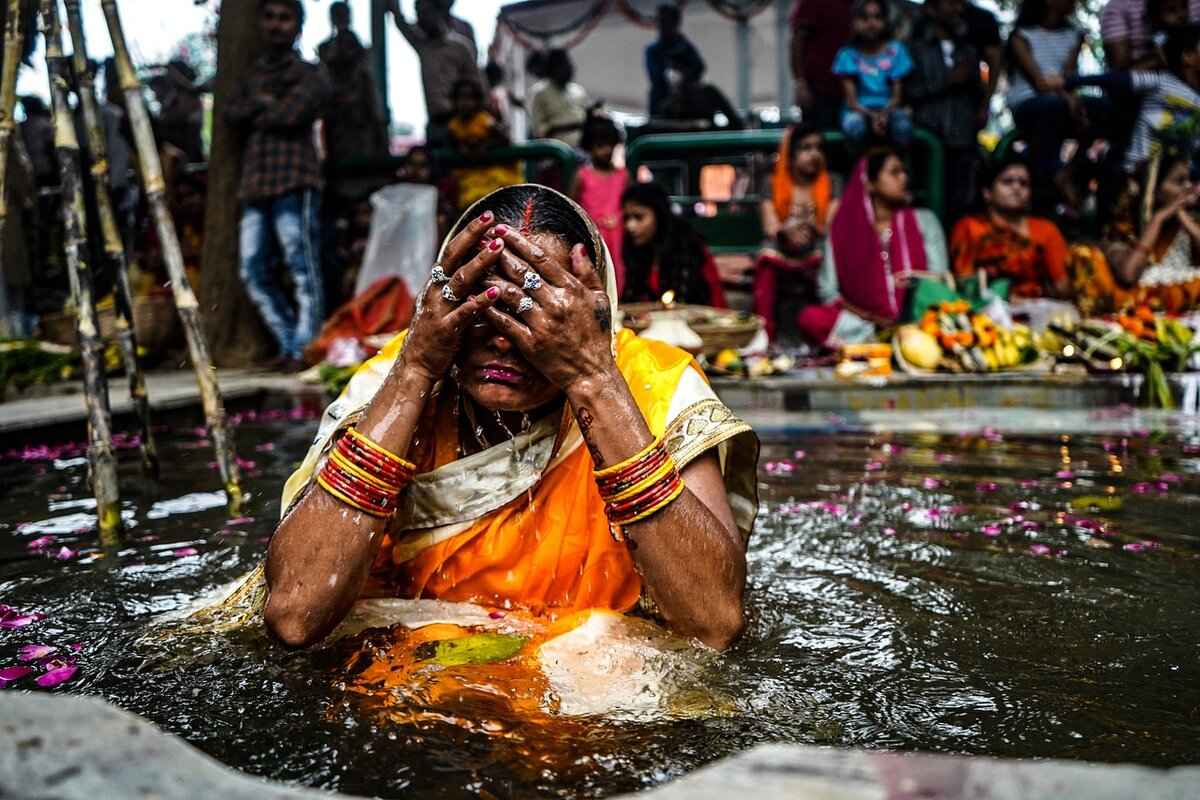
Significance of Diwali in Indian Culture
Diwali, known as the Festival of Lights, is one of the most significant celebrations in Indian culture. It embodies the essence of joy, unity, and the triumph of light over darkness. This festival is observed by millions across the country, transcending regional and cultural boundaries, making it a true symbol of Indian heritage.
The significance of Diwali lies not only in its religious connotations but also in its ability to foster a sense of community and togetherness. It marks the victory of good over evil, as depicted in the epic tale of Lord Rama’s return to Ayodhya after defeating the demon king Ravana. This event serves as a reminder of hope and the importance of righteousness in our lives.
During Diwali, families come together to celebrate, share meals, and exchange gifts, reinforcing the bonds of family and friendship. Homes are adorned with colorful rangoli, illuminating diyas, and vibrant decorations, creating a festive atmosphere that invites positivity and joy. The act of lighting lamps symbolizes the dispelling of darkness and ignorance, making way for knowledge and enlightenment.
Moreover, Diwali serves as a time for reflection and gratitude. It encourages individuals to express their appreciation for the blessings in their lives and to extend kindness to those in need. Many engage in charitable acts during this time, further emphasizing the festival’s core values of compassion and community.
In conclusion, Diwali is not merely a festival; it is a celebration of life, unity, and the enduring spirit of hope. It highlights the importance of family and community in fostering joy and prosperity, making it a cherished occasion for all who participate.
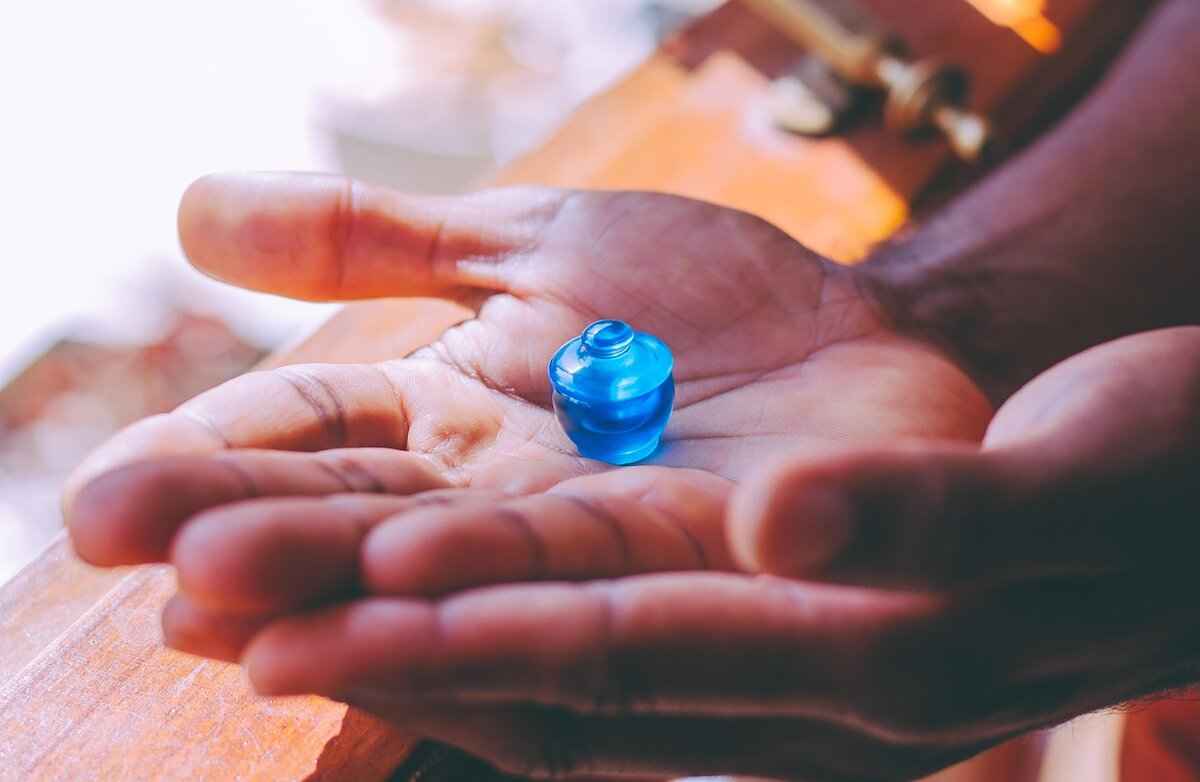
Conclusion: Celebrating Diversity in Festivals
In the vibrant cultural landscape of India, festivals play a pivotal role in uniting communities and celebrating shared values. Kali Puja and Diwali are two such festivals that, while distinct in their origins and rituals, both embody the universal theme of good triumphing over evil.
Kali Puja, primarily celebrated in Bengal, is dedicated to the worship of Goddess Kali. This festival is marked by elaborate rituals that symbolize the fierce battle against negativity and malevolence. The rituals often involve offerings, prayers, and the immersion of idols, showcasing the deep devotion of the participants. It is a time when the community comes together to honor strength and resilience, reflecting the Bengali cultural identity.
On the other hand, Diwali, known as the Festival of Lights, is celebrated across India with great enthusiasm. It signifies the return of Lord Rama to Ayodhya, marking the victory of light over darkness. The festival is characterized by lighting diyas, decorating homes, and sharing sweets, fostering a sense of joy and togetherness among families and communities. Diwali’s emphasis on prosperity and renewal resonates with people of all backgrounds, making it a truly inclusive celebration.
Both festivals highlight the rich tapestry of Indian traditions, showcasing the diversity in practices and beliefs. While Kali Puja emphasizes the fierce aspects of divine protection, Diwali focuses on joy, unity, and the welcoming of new beginnings. Together, they reflect the multifaceted nature of Indian culture, where different traditions coexist harmoniously.
In conclusion, Kali Puja and Diwali not only celebrate the triumph of good over evil but also serve as a reminder of the importance of community, resilience, and hope. These festivals are a testament to the rich cultural heritage of India, inviting individuals from all walks of life to partake in the celebrations and embrace the spirit of togetherness.
Frequently Asked Questions
- What is the main difference between Kali Puja and Diwali?
Kali Puja is primarily celebrated in Bengal and focuses on the worship of Goddess Kali, symbolizing the victory of good over evil. On the other hand, Diwali, known as the Festival of Lights, is celebrated across India and marks the return of Lord Rama to Ayodhya, emphasizing joy and prosperity.
- How are the rituals of Kali Puja different from those of Diwali?
The rituals of Kali Puja are intricate, involving offerings like food, flowers, and sometimes animal sacrifices, reflecting deep devotion. In contrast, Diwali rituals center around lighting lamps, decorating homes, and performing Lakshmi Puja, fostering a sense of community and renewal.
- Why is Kali Puja significant in Bengali culture?
Kali Puja holds immense significance as it represents resilience and strength, deeply intertwined with the cultural identity of the Bengali people. It marks the onset of winter and celebrates the harvest season, making it a pivotal event in their calendar.
- What are some common preparations for Diwali?
Preparations for Diwali often include cleaning and decorating homes with rangoli, purchasing new clothes, and gathering sweets. This emphasis on renewal and joy creates a festive atmosphere that brings families and communities together.

